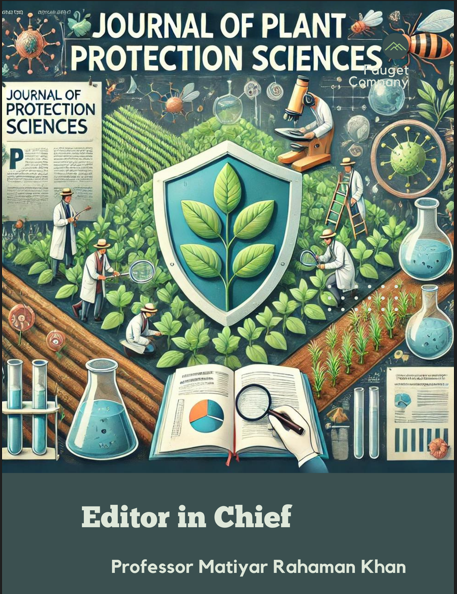Disease free seed potato production through seed plot tech nique at farmers’ level in Bangladesh
DOI:
https://doi.org/10.48165/Keywords:
Farmers, Agricultural, potatoAbstract
Among the reasons for the low yield of potato in Bangladesh, lack of disease free quality seed tubers, lack of improved varieties/ practices and disease problems are noticeable (4). The total seed potato requirement of Bangladesh is estimated at about 7.50 lakh tons per annum. Locally produced certified seed meets about 6% of the total requirement (10). Every year about 10,000 tons of potato seeds are being imported with a very high ex pense of foreign currency. Farmers, traders or cold storage owners supply the remaining seed. The cost of good quality planting mate rials produced and sold by the Bangladesh Agricultural Development Corporation (BADC) and private farms are beyond the reach of poor farmers. Therefore, the farmers are forced to acquire poor quality seed from the informal system. In the seed plot tech nique (SPT), disease free potato seed tuber (whole tuber), early planting, maintaining iso lation distance by planning non host (wheat) surrounding the seed plot, use of HYV disease resistant varieties, roughing diseased plant at 30-45 days after planting (DAP), spraying insecticide (Admire) for vector control, spray ing fungicides to minimize fungal diseases, weeding, other improve management, haulm pulling at 80DAP, harvesting, sorting, grad ing, seed treating with boric acid (3%) and storing at cold store found most effective in producing disease free seed potatoes at farm ers’ field at different locations (2). Efforts to increase the quality of planting materials, pro duction techniques in the informal system will help the resource poor farmers by making available quality planting material, higher yields and finally alleviate poverty. Hence, farmers’ field trials was undertaken to im prove the informal seed system in potato seed growing areas of Bangladesh, and to provide farmers with an alternative source for quality planting materials at a reasonable price.
References
1. Ali MS Dey TK. 1998 Workshop on Transfer of Technology under Research-Extension Link age Programme, held at BARI, Gazipur on October 22-27, 1997.
2. Anonymous. 2010 Annual Report on Tuber Crop Improvement, 2009-10. Tuber Crops Research Centre. Bangladesh Agricultural Research Institute, Gazipur-1701.
3. Dey TK Ali MS Hoque MA Hossain MM Ali S. 1995 Bangladesh Journal of Agricultural Re search 20(1): 62-66.
4. Hoque MA Islam MR Ali MS Ahmed SU Khan MAI. 2005 Bangladesh Journal of Agricul tural Research 30(4): 667-75.
5. Hossain MM Hossain MI Hoque MA Kader KA Islam MN Rahman MM Rahman MH Dey TK. 2010 Annual Report 2009-10. Tuber Crops Research Centre. Bangladesh Agricul tural Research Institute, Gazipur-1701, pp 184 -86.
6. Hoque MA. 2009 Annual Report 2009-10. Tuber Crops Research Sub Centre. Bangladesh Agri cultural Research Institute, Munshiganj-1500, Bangladesh.
Table 1.
7. Illangantileke SG Kadian MS Hossain M Hossain AE Jayasinghe U Mahmood AA. 2001 In Sci entist and Farmer Partners in Research for the 21st Century, Programme report, 1999- 2000. pp 259-64.
8. Islam ATMT Kawochar MA Kundu BC Hoque MA Reza MH Mahmud JA Rahman MM. 2011 Annual Report 2010-11. Tuber Crops Research Centre, BARI, Gazipur, pp 255-57.
9. Kadian MS Illangantileke SG Jayasinghe U Hos sain AE Hossain M Babu AGC. 2000 Pro ceedings of the Global Conference of Potato, held at New Delhi 6-11 December, 1999, Vol. 1. pp. 690-97.
10. Mahmud AA Akhter S Hossain MJ Bhuiyan MKR Hoque MA. 2009 Bangladesh Journal of Agri cultural Research 34(3): 443-48.

